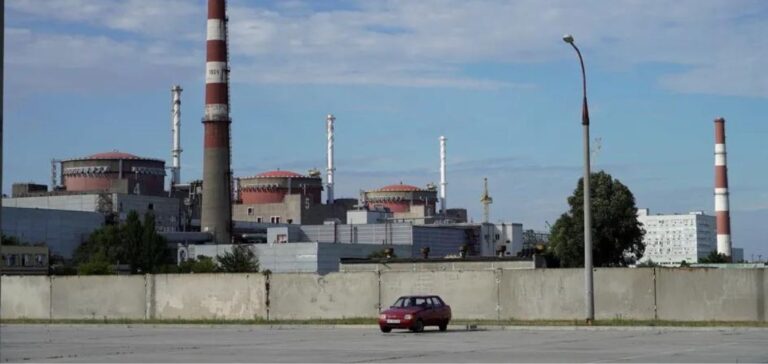The situation at the Zaporizhia nuclear power plant in Ukraine is becoming increasingly worrying. Indeed, the Ukrainian nuclear operator, Energatom, announced that the plant was cut off from the Ukrainian power grid after a Russian strike, warning of a risk of nuclear accident.
A sixth time in “black out
The last communication line between the occupied Zaporizhia nuclear power plant and the Ukrainian power grid was cut off due to Russian rocket attacks, Energatom said in a statement. The plant went into “black out” mode for the sixth time since the occupation, the reactors of units 5 and 6 were shut down cold. The operator said that 18 emergency diesel generators have been switched on to provide minimum power to the plant. However, if the external power supply of the plant cannot be renewed, a nuclear accident with radioactive consequences for the whole world could take place.
A risk of nuclear incident
Since the occupation of the Zaporizhia nuclear power plant by the Russian army in March 2022, the operator Energatom had already warned that the shutdown of the plant would lead to “gradual degradation of all its systems and equipment.” In addition, Energatom had also expressed concern about a “risk of nuclear incident” in case of a break in the last power line connecting the plant to the Ukrainian energy system.
A worsening situation
The Zaporizhia nuclear power plant is one of the largest nuclear power plants in Europe, previously producing 20% of Ukraine’s electricity. Since the occupation, none of the six reactors has generated power, but the facility remains connected to the Ukrainian energy system and consumes electricity produced by it for its own needs. The situation is all the more worrying because the Zaporijjia plant has been the target of several Russian strikes in recent months, including in September 2022, when one of the buildings was hit, causing a fire.
In conclusion, the situation at the Zaporizhia nuclear power plant is extremely worrying, with an increased risk of nuclear accident following the latest Russian strikes. The Ukrainian and international authorities must take urgent measures to ensure the safety of the population and prevent a nuclear catastrophe.






















